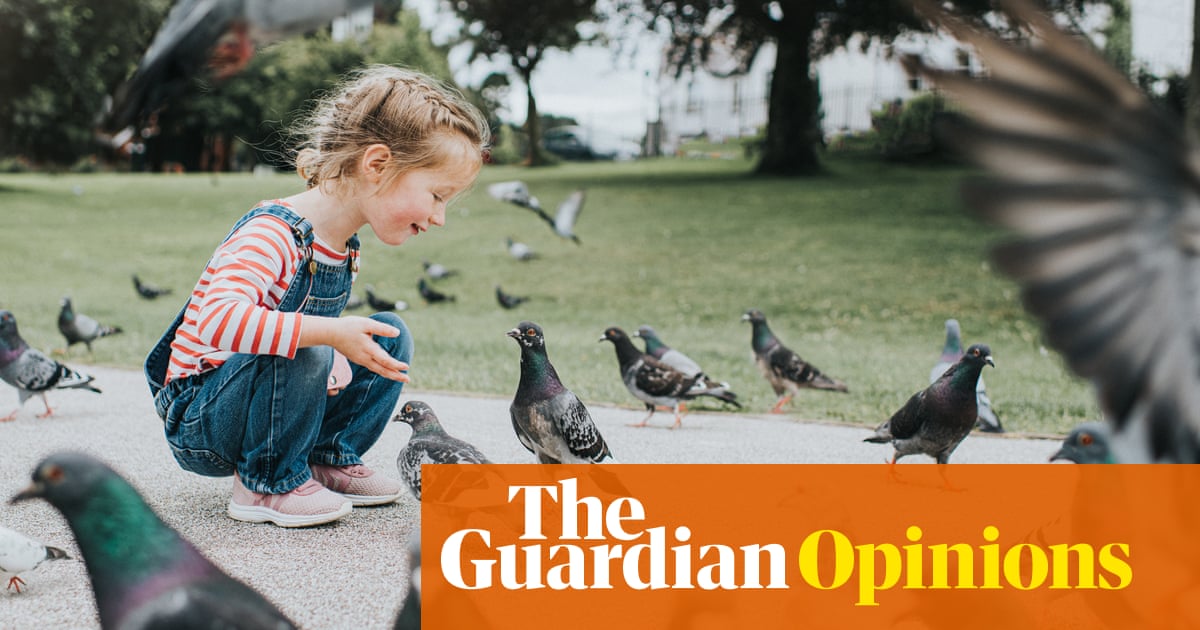Pigeons. Appalling things. I looked them up on the bird charity RSPB’s website and snorted when I came across the Where to See section. The answer is, just so you know, everywhere. Perhaps not so much outside towns and cities but in urban areas you’re never far from the sight and sound of the bloody things. If, unaccountably, you’re not familiar with this species, do feel free to get in touch and come round to my place and observe them at your leisure.
Truly they are the soundtrack of my life. For years they’ve been getting into a drainage channel on the roof. Morning, noon and night they scratch and coo and jump about. The racket is infernal. I lie in bed reflecting on the filth in that gulley just above my head. I know it’s filthy, because when there’s heavy rain their revolting detritus washes down and blocks the downpipe. I have to pull their unspeakable waste out of the pipe before something bursts and floods. There are no words to describe the tangle of excrement, nesting materials, eggs, feathers and bones. Oh Lord, the bones. I’d be less repulsed rummaging through the bin outside a chicken shop on a Sunday morning.
The How to Identify section of the RSPB’s webpage is almost as superfluous as the Where to See bit. I may not know a buzzard from a kite, or one tit from another, but I can identify a bloody pigeon. That said, I have learned that feral pigeons’ Latin name isColumba livia, and you might also refer to them as rock doves, their wild ancestors. Not in my presence you won’t. Doves, my arse.
There is a photo of me somewhere as a kid, on a trip to London, standing in Trafalgar Square holding a cup of bird seed that my dad had bought from a street vendor. I’m covered in pigeons, and apparently quite enjoying it. What was wrong with me? What was wrong with my parents? What was wrong with society? Is this what passed for entertainment in the 70s? Who says kids staring at smartphones is unhealthy? Not compared with this it isn’t.
I saw the light, or rather the shite, when I was 19. I had just put up some scaffolding for someone to clean the front of a building on Corporation Street in Birmingham. This was above Laskys, the hi-fi shop, if you know the area. Nodding at the pigeon carnage on a ledge above a window, the bloke I was working with said: “You’ve got to be careful of this stuff; it gets on your chest.” After breathing it in, I was retching for days. I used to like Laskys too. I don’t think I ever went in there again.
I scroll down the RSPB website, searching in vain for the How to Get Rid of the Bastards section. You can’t, apparently. Rightly, if disappointingly, poisoning them is verboten. A bloke used to come to the flats where I live with a bird of prey to scare them off. This worked a treat for as long as the man and his bird were there. But as soon as they returned to their van and left, back came the pigeons. Screwing down the grille over the drainage channel on the roof doesn’t work, either. They get past it. Their beaks must have evolved into the shape of Phillips screwdrivers.
I read that there are 465,000 breeding pairs of rock doves and feral pigeons in the UK. I’m not sure what that means for total numbers. It doesn’t say how many babies they’re having but it’s got to be more than two per pair. Either way, it doesn’t help that every parish in the country seems to have at least one person intent on feeding them. I’ve begged my local pigeon-feeder to stop, and been told to eff off. I’ve yelled at them to stop, and been told to eff off. The police have paid a visit and they too, presumably, have been told to eff off.
The battle is lost. The pigeons have won.
Adrian Chiles is a Guardian columnist
